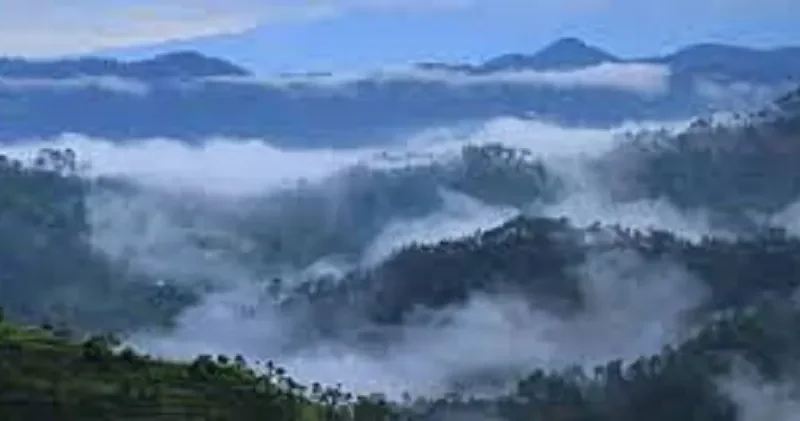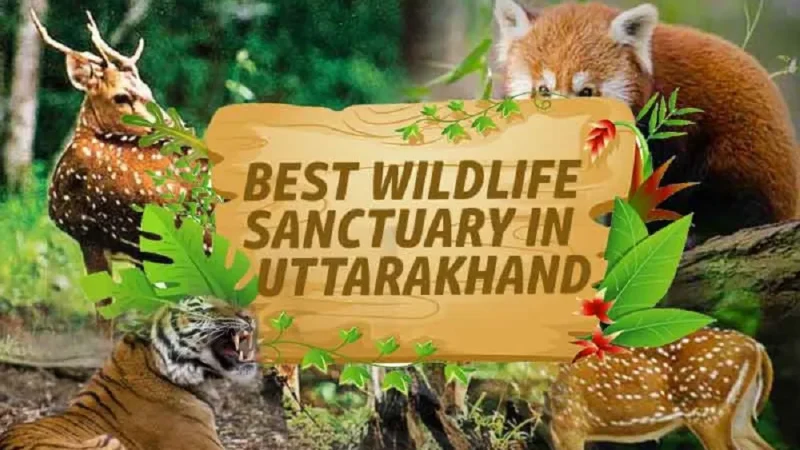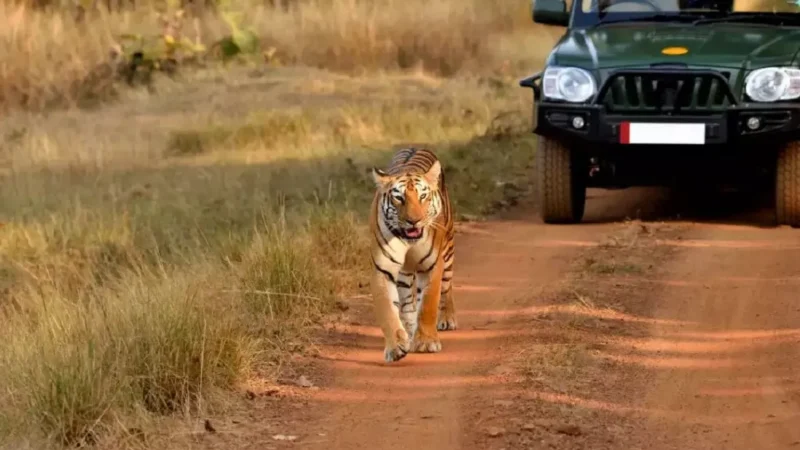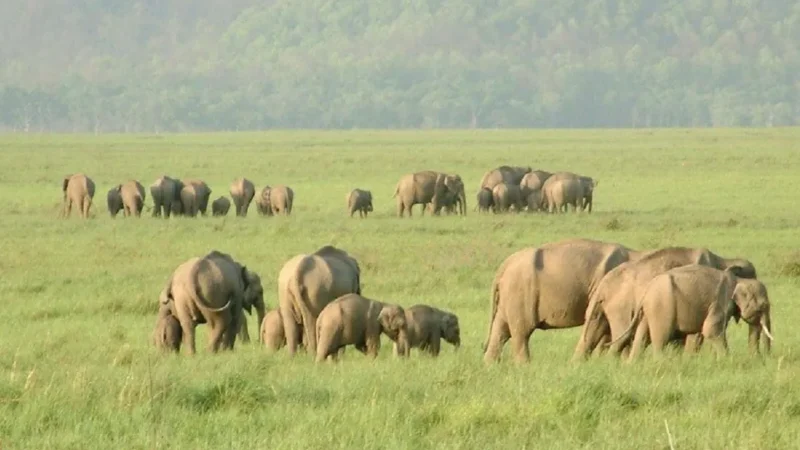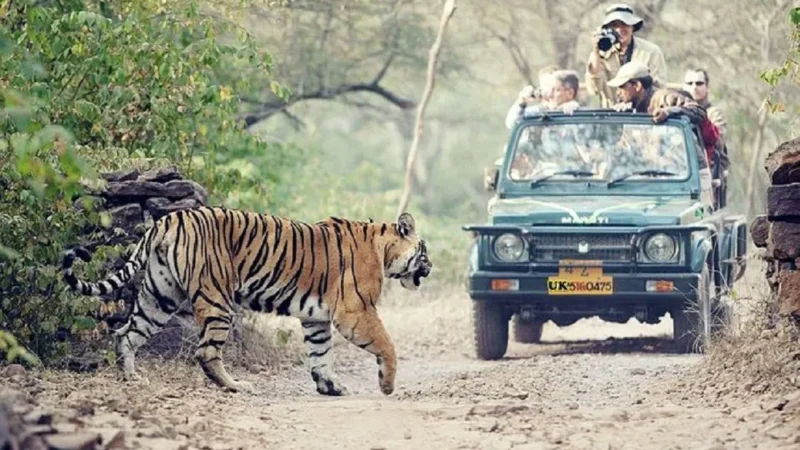Jim Corbett National Park, Uttarakhand: Ticket, Timing, Things to Do, Flora and Fauna
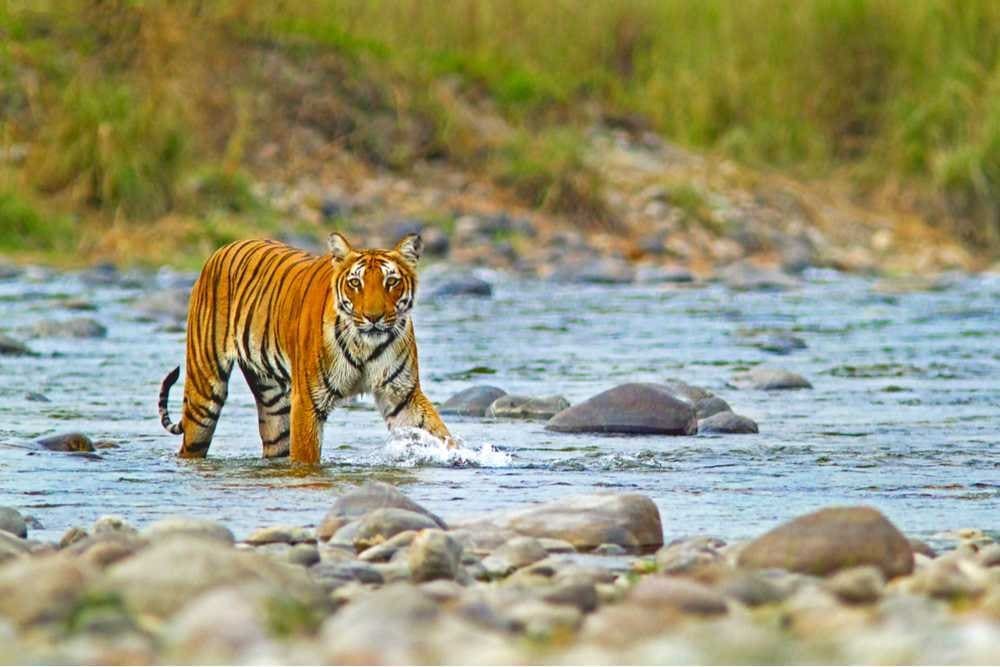
Table of Contents
ToggleJim Corbett National Park Place
Calling all adventurers, nature enthusiasts, and wildlife seekers! Are you ready to trade the city’s humdrum for the exhilarating roar of a tiger? To swap concrete jungles for emerald forests teeming with life? Then embark with us on a thrilling voyage into the heart of Jim Corbett National Park, India’s crown jewel of wildlife sanctuaries.
More than just a tiger haven, Corbett unfolds a tapestry of diverse ecosystems, from dense Sal forests echoing with bird calls to meandering rivers teeming with aquatic life. Imagine the thrill of spotting a majestic Royal Bengal Tiger slinking through the undergrowth, the awe of witnessing a herd of majestic Asian elephants silhouetted against the sunset, or the serenity of a sunrise painting the Himalayas in golden hues.
But Jim Corbett National Park is more than just breathtaking sights. It’s a living, breathing testament to the power of conservation, a sanctuary where endangered species find refuge and nature thrives. As we delve deeper, we’ll explore the park’s rich history, uncover fascinating stories of its iconic inhabitants, and learn about the dedicated individuals who safeguard this precious treasure.
History of the Corbett National Park
Jim Corbett National Park (JCP) boasts a rich history deeply intertwined with the evolution of conservation in India. From its humble beginnings as a hunting ground to its current status as a premier tiger sanctuary, the park’s journey reflects a fascinating interplay between human intervention and the natural world.
Early Days: Hunting Grounds to Protected Forest (1800s – 1930s):
- Early 19th Century: The region served as a private hunting ground for local rulers, with limited awareness of its ecological significance.
- 1868: Recognizing its potential, the British Raj declared it a “reserved forest,” initiating basic protection measures.
- 1907: Conservation concerns began to take root, with proposals to elevate the area to a wildlife sanctuary.
- Enter Jim Corbett: The legendary hunter-turned-conservationist emerged as a key figure, advocating for stricter protection and defining the park’s boundaries.
Birth of a National Park (1930s – 1950s):
- 1936: A pivotal moment arrived with the establishment of Jim Corbett National Park under the United Provinces National Park Act, marking India’s first national park.
- Corbett’s Legacy: Renowned for humanely eliminating “man-eaters” and actively campaigning for conservation, Corbett played a crucial role in its creation.
- Post-Independence: Briefly renamed “Ramganga National Park” in the 1950s, it was later rechristened “Jim Corbett National Park” to honor Corbett’s contributions.
Conservation Focus and Challenges (1970s – Present):
- 1973: JCP became one of the nine initial tiger reserves under Project Tiger, a landmark initiative for tiger conservation in India.
- Expansion and Challenges: The park has expanded its territory over the years, but faces threats like habitat fragmentation due to development and human-wildlife conflict.
- Ongoing Efforts: Dedicated conservation initiatives focus on habitat restoration, anti-poaching measures, and community outreach programs to ensure the park’s long-term sustainability.
Where is Jim Corbett
Jim Corbett National Park is located in the Nainital district of Uttarakhand state in northern India. It sits in the foothills of the Himalayas, about 250 kilometres northeast of Delhi.
Jim National Park Area
The total area of Jim Corbett National Park is 1318.54 square kilometers, which can be divided into two sections:
- Core Area: This is the most protected and sensitive part of the park, spanning 520.8 square kilometers. It is closed to all human activity except for authorized wildlife management and research work.
- Buffer Area: This area surrounds the core area and acts as a transition zone between the park and the surrounding human settlements. It covers 797.74 square kilometers and allows for some human activities, such as limited grazing and collection of non-timber forest products.
- Forests: The majority of the park is covered by dense forests, which account for 92.3% of the total area. Sal, haldu, peepal, rohini, and mango trees dominate these forests.
- Grasslands: These open areas cover around 3.3% of the park and are mainly found in the Ramganga river valley. They provide important grazing grounds for herbivores like deer and elephants.
- Water bodies: Rivers, streams, and lakes account for about 2.4% of the park’s area. The main rivers flowing through the park are the Ramganga and Kosi.
- The diverse land cover within Jim Corbett National Park supports various flora and fauna. The park is home to over 500 species of birds, 50 species of mammals, and 25 species of reptiles.
Corbett Park Official Website
The official website of Jim Corbett National Park is: https://www.corbettonline.uk.gov.in/. The Uttarakhand Forest Department manages it and provides information about the park.
Safari Timing in Corbett
Three types of safaris are available in Jim Corbett National Park; Jeep Safari, Elephant Safari and Canter Safari. Jeep and elephant safaris are the most common and available for every park zone. But Canter safaris run only in Dhikala Zone, the core area of the national park. Also note that only those people can do jeep safari at Dhikala zone having permits to stay at the forest lodges situated at Dhikala zone. If staying outside Dhikala zone then canter safari is the only option to do safari at Dhikala zone.
Because of the varied topography and enormity of wilderness, safari timing in Corbett are mainly limited to sunshine period of the day only. The park normally opens at 6’o’ clock in morning and remains open till 11’o’ clock in morning while in the afternoon the park’s opening timing is 1430 to 1730. However the timings can be changed as per the season. So it is good to get the entire information from the forest officials.
Timings for Jeep Safari


Best time to visit Jim Corbett
Choosing the best time to visit Jim Corbett National Park depends on your priorities.
Summer (March to June)
- Pleasant weather with highs around 30°C and lows around 20°C, ideal for outdoor activities.
- Higher chances of spotting animals as they venture out for water.
- Longer daylight hours allow for more extensive game drives.
- Off-season, so potentially fewer crowds and lower prices.
Monsoon (July to September)
- Lush greenery and waterfalls due to the rains.
- Fewer crowds and potentially lower prices than peak season.
- Unique opportunity to see migratory birds.
Winter (October to February)
- Ideal weather with comfortable temperatures ranging from 5°C to 20°C.
- Most zones of the park are open and easily accessible.
- There are higher chances of spotting tigers as they are more active in cooler weather.
- It is peak season, so a vibrant park atmosphere with various activities available.
Overall:
- For pleasant weather and wildlife viewing: October to February (winter) is ideal.
- For off-season pricing and fewer crowds: March to June (summer) could be suitable if you can handle the heat.
- For unique scenery and a different perspective: July to September (monsoon) might be an option, but remember park closures and accessibility limitations.
Tourist zones of Corbett Park
Jim Corbett National Park, named after the legendary hunter-turned-conservationist, is a haven for wildlife enthusiasts and nature lovers. It boasts diverse landscapes, ranging from dense forests and grasslands to rivers and marshes, providing shelter to many flora and fauna. To ensure proper management and visitor distribution, the park is divided into several tourist zones, each offering unique experiences.
- Dhikala Zone: Widely considered the most popular zone, Dhikala offers the highest chance of spotting tigers, leopards, elephants, sloth bears, and various deer species. Its diverse terrain encompasses grasslands, sal forests, and riverine areas, making it a photographer’s paradise. Jeep safaris, canter safaris, and elephant safaris are available within this zone.
- Bijrani Zone: Located close to the park’s entrance, Bijrani is well-known for its diverse wildlife and scenic beauty. Jeep safaris are the only mode of exploration allowed here, making it ideal for those seeking a quieter and more personalized experience. This zone is home to a watchtower offering panoramic views of the landscape.
- Jhirna Zone: Renowned for its sightings of tigers, Jhirna boasts dense sal forests interspersed with grasslands and water bodies. Jeep safaris and elephant safaris are available here, providing opportunities to witness the diverse wildlife. This zone is also known for its birdlife, attracting birdwatchers with its rich avifauna.
- Durga Devi Zone: Nestled in the northeastern part of the park, Durga Devi is a paradise for birdwatchers. This zone offers jeep safaris and nature walks, allowing visitors to explore the dense forests and witness the vibrant birdlife. It’s known for sightings of species like peacocks, hornbills, and eagles.
- Sitabani Zone: This zone encompasses the Sitabani forest and the Ramganga River, providing breathtaking scenic beauty. Jeep safaris are the only mode of exploration allowed here, offering glimpses of tigers, leopards, and various other animals. Boat rides on the Ramganga River are also available, granting a unique perspective of the park’s ecosystem.
- Pakhro Zone: This newly opened zone offers a unique opportunity to explore the lesser-known areas of the park. Jeep safaris are the only mode of exploration allowed here, providing sightings of tigers, leopards, and other wildlife amidst the dense forests and grasslands.
- Dhela Zone: This eco-tourism zone offers a unique experience for nature enthusiasts. Jeep safaris, nature walks, and birdwatching trails provide opportunities to explore this scenic zone’s diverse flora and fauna. Dhela is home to various birds, reptiles, and mammals, making it a perfect destination for those seeking a peaceful, off-the-beaten-path experience.
Flora
Jim Corbett National Park boasts a rich and diverse flora, forming a vital part of its ecosystem and providing sustenance and shelter for its myriad fauna.
- Sal Forests: Covering almost half of the park’s area, these tall, majestic trees (Shorea robusta) define Corbett’s landscape. They provide shade and regulate temperature, creating a cool and humid microclimate essential for various animal species.
- Mixed Forests: Intermingling with sal forests are diverse species like haldu (Adina cordifolia), bijasal (Pterocarpus marsupium), and rohini (Tecomella undulata), creating a complex and vibrant forest ecosystem.
- Riverine Forests: Along the Ramganga and other rivers, dense forests dominated by species like shisham (Dalbergia sissoo), khair (Acacia catechu), and sirsa (Albizia procera) thrive. These forests are crucial for flood control and offer unique habitats for wildlife.
- Grasslands: Dotted throughout the park are open grasslands, vital grazing grounds for herbivores like deer and elephants. These areas also support various flowering plants and contribute to the park’s scenic beauty.
- Climbers and Creepers: A variety of climbers and creepers like the flamboyant ixora (Ixora coccinea) and the vibrant coral honeysuckle (Lonicera japonica) add color and diversity to the forest canopy.
- Flame of the Forest: During spring, the vibrant orange blooms of the flame of the forest (Butea monosperma) paint the landscape in fiery hues, creating a breathtaking spectacle.
- Amaltas: The golden shower tree (Cassia fistula) adorns the park with its bright yellow, chandelier-like flowers, offering a visual treat.
Animals in Park
From majestic predators to elusive reptiles, the park shelters various animals, making it a dream destination for wildlife enthusiasts.
Predators:
- Royal Bengal Tiger: The undisputed jungle king, the Royal Bengal Tiger (Panthera tigris tigris) is the most sought-after sighting in Corbett. With its powerful presence and elusive nature, spotting a tiger remains a thrilling experience.
- Leopard: Known for its agility and stealth, the leopard (Panthera pardus) thrives in both dense forests and open grasslands. This adaptable predator offers exciting chances for sightings during safaris.
- Sloth Bear: The shaggy-maned sloth bear (Melursus ursinus) adds a unique charm to the park’s fauna. While they can be formidable predators, their predominantly omnivorous diet and laid-back demeanor fascinate them.
Herbivores:
- Asian Elephant: These gentle giants (Elephas maximus) symbolise strength and intelligence. Spotting a herd of elephants peacefully grazing or bathing in the Ramganga River is an unforgettable experience.
- Spotted Deer: The most commonly sighted herbivore in the park, the spotted deer (Axis axis) grazes gracefully in open areas and offers ample opportunities for observation.
- Sambar Deer: Larger and more elusive than spotted deer, the sambar deer (Cervus unicolor) thrives in dense forests. Catching a glimpse of this majestic creature adds to the thrill of exploring the park.
Other Mammals:
- Wild boar: Often seen in groups, wild boars (Sus scrofa) play a crucial role in the ecosystem by scavenging and dispersing seeds.
- Rhesus Macaque: These playful monkeys (Macaca mulatta) inhabit wooded areas and are easily seen along roads and near tourist zones.
- Jackal: These omnivorous mammals (Canis aureus) play an important role in the park’s food chain as scavengers.
Avifauna:
- More than 500 species of birds call Jim Corbett their home, offering diverse sightings for birdwatchers.
- Predatory birds: Eagles, hawks, and owls soar through the skies, adding an aerial dimension to the wildlife experience.
- Colorful birds: Painted storks, kingfishers, and peacocks bring vibrant hues to the forest canopy with dazzling plumage.
Reptiles and Amphibians:
- Mugger Crocodile: Lurking in the waters of the Ramganga River, the mugger crocodile (Crocodylus palustris) is a powerful reminder of the park’s diverse reptile population.
- Snakes: Cobras, pythons, and various non-venomous snakes inhabit the park, adding to its ecological diversity.
- Frogs and Toads: These amphibians are vital in the food chain and contribute to the ecosystem’s health.
Corbett National Park Jungle Safari
Jim Corbett National Park is an unforgettable adventure, offering the chance to witness diverse wildlife in their natural habitat. Imagine the thrill of spotting a majestic Royal Bengal Tiger, the lumbering gait of an Asian elephant, or the vibrant flash of a kingfisher’s wings – these are just a glimpse of the experiences that await you on a safari through this incredible park.
Types of Safaris:
Jim Corbett National Park offers various safari options to cater to different preferences and budgets. Here are the most popular ones:
- Jeep Safari: The most common and thrilling option, offering close encounters with wildlife while navigating through diverse landscapes.
- Canter Safari: Larger vehicles ideal for larger groups, providing a comfortable and economical way to explore the park.
- Elephant Safari: A unique experience offering a different perspective on the park and a chance to observe wildlife from atop these gentle giants.
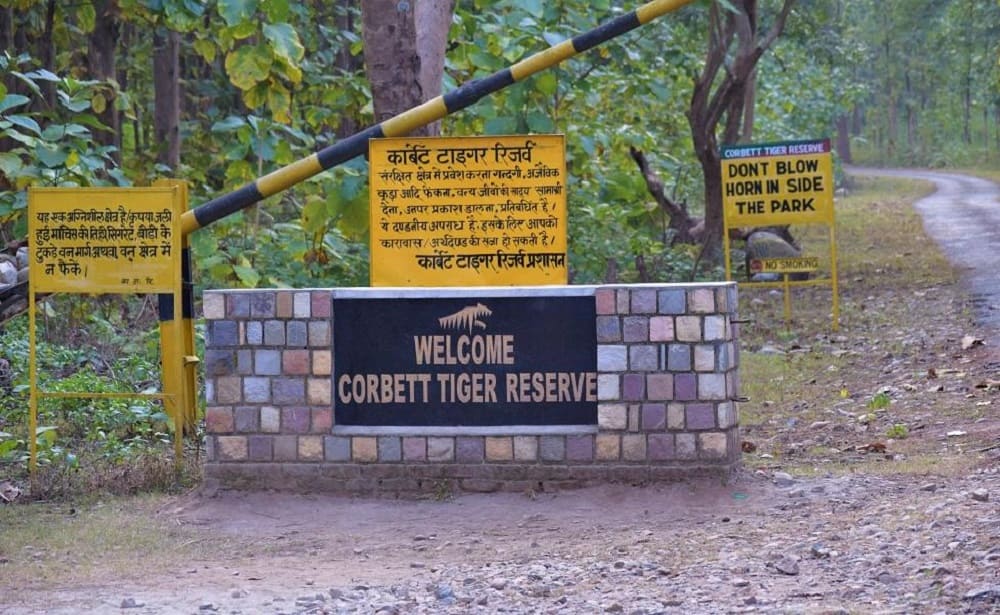
Corbett Safari Charges
Day Safari Pricing
Jhirna | Dhela | Throughout year | ₹ 3380 | ₹ 6680 | ₹ 2800 | ₹ 800 |
Dhela | Dhela | Throughout year | ₹ 3380 | ₹ 6680 | ₹ 2800 | ₹ 800 |
Bijrani | Amdanda | 15 Oct – 30 June | ₹ 3380 | ₹ 6680 | ₹ 2500 | ₹ 800 |
Garjia | Garjiya | 15 Oct – 30 June | ₹ 3380 | ₹ 6680 | ₹ 2800 | ₹ 800 |
Durgadevi | Durgadevi | 15 Nov – 15 June | ₹ 3380 | ₹ 6680 | ₹ 2800 | ₹ 800 |
Sonanadi | Vatanvasa | 15 Nov – 30 June | ₹ 3380 | ₹ 6680 | ₹ 2800 | ₹ 800 |
Pakhro | Pakhro | 15 Nov – 30 June | ₹ 3380 | ₹ 6680 | ₹ 2800-4500 | ₹ 800 |
Other Charges/Discounts
1. Safari Admission Criteria:
* A safari permit allows entry to a maximum of 6 individuals, inclusive of 2 children under the age of 12.
* Only authorized guides and gypsies are permitted inside the Corbett Tiger Reserve (CTR).
2. Senior Citizen Discount:
* Indian nationals who are senior citizens are eligible for a discount of Rs 250 per person, provided they show valid ID proof.
3. Student Discount:
* Indian national students aged between 12 and 18 years qualify for a discount of Rs 375 per person, with the condition that a valid student ID is presented.
4. Camera Fee
* For cameras with a lens >/= 300mm, the fee is Rs 1000 for Indians and Rs 2000 for foreigners.
* For cameras with a lens < 300mm, the fee is Rs 1500 for Indians and Rs 3000 for foreigners.
**The pricing encompasses the per person safari fee, vehicle permit fee, solid waste management charges, and portal fee.
**Nationals possessing an OCI card or from SAARC nations will be charged in accordance with the rates for Indian nationals.
** Dhikala does not offer day safari permits. To enjoy a safari, please ensure to book either a Canter ride or a night stay.
Canter Pricing
| Zones | Boarding Point | Visit Time | Permit (Indian) | Permit (Foreigner) |
|---|---|---|---|---|
| Dhikala | Ramnagar & Dhangarhi | 15 Nov – 15 June | ₹ 1500 + 18% GST | ₹ 3000 + 18% GST |
Other Charges/Discounts
1. Canter Booking Guidelines:
* The Canter is not a gypsy safari, but rather a 16-seater bus designed to provide a shared safari experience.
* Canter allows a maximum of 4 individuals booking at once.
* Seats must be purchased individually and children under 12 years are not allocated seats under the standard permit. To book a seat for them, a separate ticket must be purchased.
* In the event of a delayed arrival, the Canter will not wait, and Canter permits cannot be adjusted or rescheduled.
2. Concessions for Senior Citizens:
* Indian nationals identified as senior citizens are entitled to a discount of Rs 750 per person, subject to the presentation of valid ID proof.
3. Student Concession:
* Indian national students, aged between 12 and 18 years, are eligible for a concession of Rs 1125 per person, granted that a valid student ID is shown.
4. Camera Charges:
* >/=300mm Lens: A charge of Rs 1000 is applicable for Indians and Rs 2000 for foreigners.
* < 300mm Lens: A charge of Rs 1500 is applicable for Indians and Rs 3000 for foreigners.
Additional Pricing Information:
* The pricing encompasses charges for the vehicle, guide, and safari permit.
* Charges for Solid Waste Management and portal fees are additional and are payable as per the booking.
**Nationals possessing an OCI card or from SAARC nations will be charged in accordance with the rates for Indian nationals.
Night Stay Pricing (2 pax)
| Zones | Entry Gate | Visit Time | 1 Room (Indian) | 1 Room (Foreigner) | Vehicle+ Driver | Guide |
|---|---|---|---|---|---|---|
| Jhirna | Dhela | 15 Nov – 14 June | ₹ 3500-5050 | ₹ 10450 | ₹5000 | ₹ 800 |
| Dhela | Dhela | 15 Nov – 14 June | ₹ 3500-5050 | ₹ 10450 | ₹ 5000 | ₹ 800 |
| Bijrani | Amdanda | 15 Nov – 14 June | ₹ 3500-5050 | ₹ 10450 | ₹ 4700-5600 | ₹ 800 |
| Sonanadi | Vatanvasa | 15 Nov – 14 June | ₹ 3500-5050 | ₹ 10450 | ₹ 6200 | ₹ 800 |
| Dhikala | Dhangarhi | 15 Nov – 14 June | ₹ 3500-5050 | ₹ 10450 | ₹ 6000-6500 | ₹ 800 |
| Pakhro | Pakhro | 15 Nov – 14 June | ₹ 3500-5050 | ₹ 10450 | ₹ 6200 | ₹ 800 |
Other Charges/Discounts
. Pricing and Stay Details:
* The price is applicable for a 1-night stay for 2 persons in 1 room.
* The safari permit is included in the night stay.
* Comprehensive pricing includes Room Rent, Housekeeping, GST (as per government norms), campaign fee, per person (pax)entry fee, and Solid Waste Management.
2. Discounts:
* Senior Citizen Discount: Indian national senior citizens receive a 50% discount on room rent and per person entry fee, applicable only to their room, upon presenting valid ID proof.
* Student Discount: Students are entitled to a 75% discount on the per person entry fee only, available upon presenting a valid student ID proof.
3. Camera Fees:
* </= 300mm Lens: A fee of Rs 1000 is applicable for Indians and Rs 2000 for foreigners.
* > 300mm Lens: A fee of Rs 1500 is applicable for Indians and Rs 3000 for foreigners.
4. Night Stay and Amenities:
* Some stays do not provide canteen facilities, necessitating guests to bring their own rations. Cook and kitchen facilities are available for use.
5. Prohibitions and Restrictions:
* The consumption or use of Non-Vegetarian food, Alcohol and Firecrackers is strictly prohibited.
* No vehicle movement is allowed during nighttime hours to ensure the safety and tranquility of the environment.
**Nationals possessing an OCI card or from SAARC nations will be charged in accordance with the rates for Indian nationals.
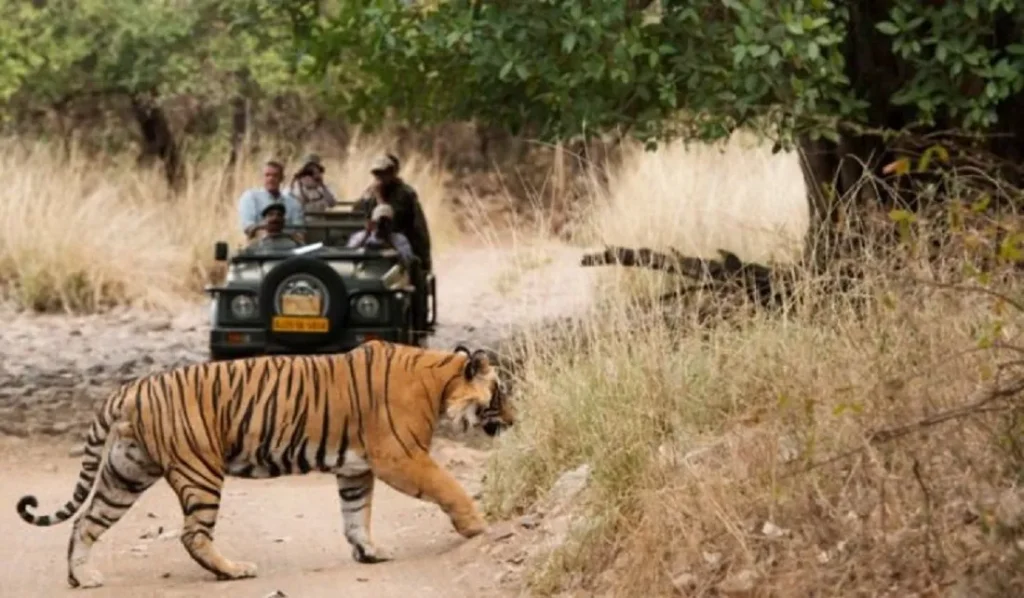
Jim National Park Safari Booking
Booking Jeep Safari Permits
Please ensure all details are accurate and review the terms before completing the booking process.
- Accessing the Official Website
Visit Corbett Tiger Reserve Official Portal or eCorbett Ver 3.0. - Choosing Safari Type
Select the zone from the dropdown.Note: Jeep Safari is not available in Dhikala Zone. For this zone, choose Canter Safari.
- Permit Availability Check
Check permit availability on the website, date-wise and zone-wise. - Initial Information
Select travel zone, number of adults, and travel date.
Maximum of 6 individuals per booking.
Choose “Morning” or “Afternoon” permits.
Note: Children below 12 years do not require a permit. - Personal Details Submission
Provide name, gender, country, ID proof type, ID number, and age.
Original ID details are mandatory to avoid cancellation and legal issues. - Gypsy Allocation
A Gypsy will be automatically allocated with your permit.
Option to change/select a specific Gypsy is available within 8 hours of booking the permit. - Guide and Driver Charges
Pay guide and driver charges separately.Charges are mentioned on the permit. - Review Booking Summary
Read terms and conditions carefully.
Tickets are non-refundable and non-transferable after payment. - Payment Process
Enter whtasapp enabled mobile number for OTP validation.
Complete payment.
Receive CTR ticket with details and a QR code. - Charges and Pricing
Charges are based on one Gypsy, regardless of whether it’s for 1 or 6 passengers. - Customer Support
Contact CTR Support at 1800 309 6260, +91 9759363344, or support@corbettgov.org for assistance.
Booking Night-stay Permits
Please ensure all details are accurate and review the terms before completing the booking process.
- Accessing the Official Website
Visit Corbett Tiger Reserve Official Portal or eCorbett Ver 3.0. - Reservation Schedule
Advance Booking: Reservations can be made up to 45 days in advance.
Slot Availability: New booking slots open every Monday at 10:00 AM. - Inclusion of Jeep Safari
Night Safari booking charges include 2 Jeep Safari, eliminating the need for additional fees. - Selecting Dates and Availability
Choose check-in and check-out dates, number of rooms, adults, children (below 12 years), and visitor types.
Click on “Find” to proceed.
Only available rooms will be shown in the list.
Note: Children below 12 years do not require a permit. - Personal Details Submission
Provide name, gender, country, ID proof type, ID number, and age.
Original ID details are mandatory to avoid cancellation and legal issues. - Choosing Forest Rest House (FRH)
Review details like pricing, room type, capacity, zone, and gate of available FRHs.
Select an FRH by clicking “Book Now”. - Personal Details Entry
Enter name, gender, ID proof type, ID number, and age manually.
Booking is limited to a maximum of 6 individuals.
Original ID details are required to avoid getting banned and legal issues. - Gypsy Allocation
A Gypsy will be automatically allocated with your permit.
Option to change/select a specific Gypsy is available within 8 hours of booking the permit. - Guide and Driver Charges
Pay guide and driver charges separately.Charges are mentioned on the permit. - Review Booking Summary
Read terms and conditions carefully.
Tickets are non-refundable and non-transferable after payment. - Payment Process
Enter whtasapp enabled mobile number for OTP validation.
Complete payment.
Receive CTR ticket with details and a QR code. - Ticket Confirmation
After payment, receive the CTR ticket with all details and a QR code for gate entry.Visitors are responsible for confirming their selected stay-type, zone, and dates before booking. - Customer Support
For issues or complaints, contact CTR Support at 1800 309 6260, +91 9759363344, or support@corbettgov.org.
Booking Canter Permits
Canter Safari is a shared bus which has a capacity of 16 pax.
- Accessing the Official Website
Visit Corbett Tiger Reserve Official Portal or eCorbett Ver 3.0.
Note: Canter Safari is only available in Dhikala Zone. - Permit Availability Check
Check permit availability on the website, date-wise. - Initial Information
Select travel zone, number of adults, and travel date. Maximum of 6 individuals per booking.
Choose “Morning” or “Afternoon” permits.
Note: Children below 12 years do not require a permit until there is separate seat required for them. - Personal Details Submission
Provide name, gender, country, ID proof type, ID number, and age. Original ID details are mandatory to avoid cancellation and legal issues. - Review Booking Summary
Read terms and conditions carefully.
Tickets are non-refundable and non-transferable after payment. - Payment Process
Enter whtasapp enabled mobile number for OTP validation.
Complete payment.
Receive CTR ticket with details and a QR code. - Boarding Point
You can board the canter either from Ramnagar Corbett Office or from Dhangari Gate. - Customer Support
Contact CTR Support at 1800 309 6260, +91 9759363344, or support@corbettgov.org for assistance.
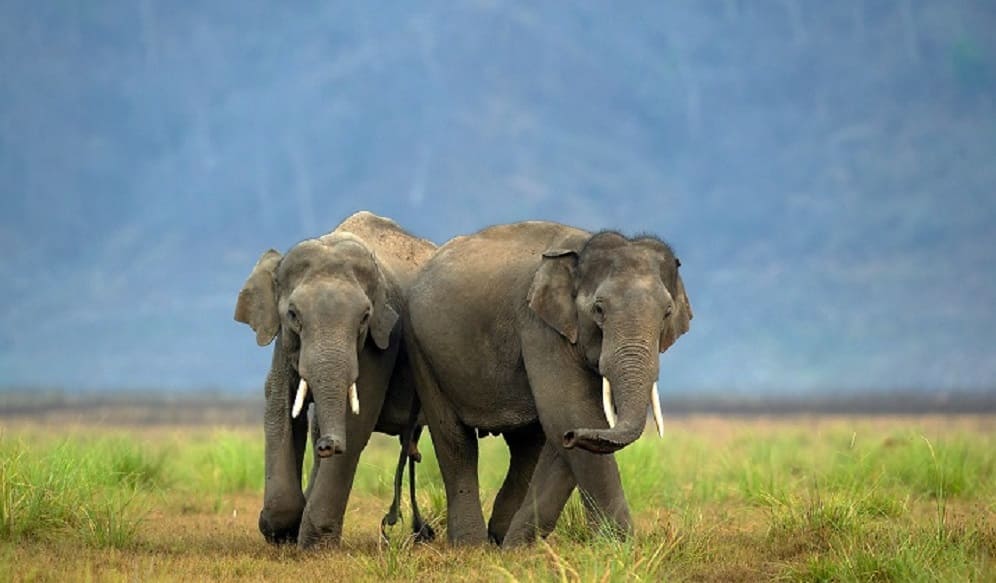
Fun activities
Jim Corbett National Park offers more than just thrilling jungle safaris and breathtaking wildlife sightings. It’s a haven for adventure enthusiasts and nature lovers, providing a plethora of fun activities to engage in:
- Jeep Safaris: Embark on an exhilarating journey through the diverse landscapes of Corbett, spotting tigers, leopards, elephants, and a myriad of other animals in their natural habitat.
- Nature Walks: Immerse yourself in the wilderness, following designated trails through dense forests and grasslands, encountering diverse flora and fauna.
- Birdwatching: With over 500 species of birds calling Corbett home, it’s a paradise for birdwatchers. Keep your binoculars handy and listen out for the musical calls of eagles, kingfishers, and peacocks.
- River Activities: Enjoy boat rides on the Ramganga River, offering stunning landscape views and a chance to spot crocodiles and other aquatic creatures. Some zones like Sitabani also offer options for kayaking and coracle rides.
- Angling: Cast your line in designated fishing zones and try catching mahseer, catfish, and other freshwater fish. Remember to obtain necessary permits and follow regulations.
- Photography: Capture the captivating beauty of the park, from majestic animals and vibrant landscapes to breathtaking sunrises and sunsets. Be responsible and avoid using flash photography near animals.
- Camping: Immerse yourself in the wilderness under the starry sky in designated areas. Enjoy campfires, storytelling, and the serenity of nature. Remember to follow camping regulations and prioritize responsible practices.
- Visit the Corbett Museum: Delve into the history of Jim Corbett, the legendary hunter-turned-conservationist, and learn about the park’s fascinating past through exhibits and artifacts.
- Explore Nearby Attractions: Extend your adventure by visiting nearby attractions like Garjia Temple, Sitabani Forest, and Dhangarhi Gate, each offering unique experiences and historical significance
Hotel and Resorts
Here are some hotels and resorts you can consider staying at when visiting Jim Corbett National Park:
Luxury Hotels:
- Taj Corbett Resort & Spa, Uttarakhand: Nestled amidst the foothills of the Himalayas, this luxurious resort offers breathtaking views of the Ramganga River and surrounding forests. Guests can enjoy a variety of amenities, including an outdoor pool, spa, fitness center, and multiple dining options.
- TheAahana Corbett: This luxurious resort is situated amidst the dense Sal forests of Corbett National Park. It offers spacious and well-appointed villas, an outdoor pool, spa, fitness center, and multiple dining options.
- Namah Resort Jim Corbett, a member of Radisson Individuals: This elegant resort is located near the Ramganga River and offers stunning views of the surrounding landscape. It features spacious rooms, an outdoor pool, spa, fitness center, and multiple dining options.
Mid-Range Hotels:
- Le Roi Corbett: This well-appointed resort is located on the outskirts of Corbett National Park and offers comfortable accommodation, an outdoor pool, spa, and multiple dining options.
- Corbett The Baagh Spa & Resort: This charming resort is nestled amidst the Sal forests of Corbett National Park and offers a variety of amenities, including an outdoor pool, spa, fitness center, and multiple dining options.
- The Riverview Retreat By Leisure Hotels: This eco-friendly resort is located on the banks of the Ramganga River and offers stunning views of the surrounding landscape. It features comfortable rooms, an outdoor pool, spa, and multiple dining options.
Budget-Friendly Hotels:
- Jungle Lore Resort Corbett: This budget-friendly resort is located on the outskirts of Corbett National Park and offers comfortable accommodation, an outdoor pool, and multiple dining options.
- Dhikala Zone Forest Rest House: This government-run rest house is located within the Dhikala zone of Corbett National Park and offers basic accommodation in the heart of the park.
- Bijrani Zone Forest Rest House: This government-run rest house is located within the Bijrani zone of Corbett National Park and offers basic accommodation in a scenic location.
Jim Corbett National Park is famous for which animal
Jim Corbett National Park is most famous for being home to the majestic Royal Bengal Tiger. These magnificent creatures are the apex predators of the park and a major draw for tourists.

Jim Corbett National Park River
Jim Corbett National Park is blessed with two main rivers that flow through its territory, each playing a vital role in shaping the park’s ecosystem and providing a haven for diverse flora and fauna. These rivers are:
1: Ramganga River:
- Lifeline of the Park: The Ramganga River, originating in the Doodhatoli ranges of the Himalayas, is often referred to as the “lifeline” of Jim Corbett National Park. It stretches for approximately 100 kilometers within the park, serving as a crucial source of water for animals and plants alike.
- Habitat for Diverse Species: The Ramganga River and its tributaries provide vital habitat for a variety of aquatic creatures, including fish, reptiles, and amphibians. Additionally, its banks are home to numerous birds, mammals, and insects that rely on the river for survival.
- Scenic Beauty: The Ramganga River adds to the park’s scenic beauty, offering mesmerizing views with its winding course through the forests and grasslands. Visitors can enjoy boat rides on the river, offering a unique perspective of the park’s ecosystem.
2: Kosi River:
- Seasonal River: The Kosi River, originating in the Mohan foothills, is a seasonal river that flows through the eastern part of the park. During the monsoon season, it swells significantly, contributing to the park’s water resources.
- Important for Wildlife: The Kosi River is an important source of water for wildlife, especially during the dry season when other water sources might be scarce. Animals like elephants, tigers, and deer frequently visit the river to quench their thirst.
- Religious Significance: The Kosi River holds religious significance for many locals, with the Garjiya Devi Temple situated on its banks attracting pilgrims throughout the year.
Jim Corbett Park Camping
Camping in Jim Corbett National Park offers an immersive and thrilling way to experience this iconic park’s vibrant wilderness and diverse wildlife. Surrounded by dense forests, teeming with animal life, and echoing with the sounds of nature, it’s an adventure that promises unforgettable memories.
Types of Camping:
- Forest Rest House Camping: Stay within the designated forest rest houses located in specific zones like Dhikala and Bijrani. These offer basic amenities like beds, shared bathrooms, and canteens, providing a comfortable base for exploring the surrounding areas.
- Organized Camping: Opt for organized camping tours offered by various resorts and tour operators. These typically include pre-pitched tents, meals, campfires, and guided nature walks, ensuring a hassle-free experience.
- Jungle Camps: Immerse yourself in the wilderness at private jungle camps outside the park boundary. These offer varying levels of amenities, from basic tents to luxurious cottages, catering to different budgets and preferences.
Things to Remember:
- Permits: Obtain necessary permits from the forest department well in advance, especially during peak season.
- Seasons: Consider the season when planning your camping trip. Winter (October to February) offers pleasant weather, while summer (March to June) can be hot and humid. Monsoon (July to September) sees limited access due to closures.
- Zones: Choose a camping location based on your interests. Dhikala zone is known for tiger sightings, while Bijrani offers scenic beauty.
How to Reach Jim Corbett
To reach Jim Corbett National Park, located in the state of Uttarakhand, India, you have several options depending on your starting point:
- By Air: The nearest airport to Jim Corbett National Park is Pantnagar Airport, which is approximately 50 kilometers away. From there, you can hire a taxi or take a bus to reach the national park.
- By Train: The nearest railway station to Jim Corbett National Park is Ramnagar Railway Station, which is well-connected to major cities like Delhi, Lucknow, and Varanasi. From Ramnagar, you can hire a taxi or take a bus to reach the park.
- By Road: Jim Corbett National Park is well-connected by road. You can either drive your own vehicle or take a bus from nearby cities like Delhi, Dehradun, or Haridwar. The park has several entry gates, so make sure to plan your route accordingly based on the gate closest to your destination within the park.
- Private Transportation: Many tour operators and resorts in nearby towns offer transportation services to Jim Corbett National Park. You can inquire about these options when booking your accommodation.
Places to Visit near Corbett National Park
Here are some of the best places to visit near Jim Corbett National Park, each offering unique experiences and attractions:
Hill Stations:
- Nainital: A popular hill station nestled in the Kumaon Hills, Nainital is known for its Naini Lake, boating opportunities, and stunning Himalayan views. Enjoy boating, shopping at the Tibetan Market, and exploring historical sites like Governor’s House and Raj Bhawan.
- Ranikhet: This charming hill station offers breathtaking views of the Himalayas, serene natural beauty, and a laid-back atmosphere. Visit the Golf Course, trek to viewpoints like Cheena Peak, or explore the Army Heritage Museum.
- Mukteshwar: This quaint hill station is known for its apple orchards, temples, and panoramic views. Hike to Mukteshwar Temple, visit the Fruit Research Station, or simply relax amidst the peaceful surroundings.
Wildlife and Nature:
- Sitabani Forest Reserve: Located near Ramnagar, this reserve offers jeep safaris and elephant safaris for spotting wildlife like leopards, deer, and various bird species. Enjoy nature walks, birdwatching, and exploring the diverse flora and fauna.
- Dhangarhi Museum: Learn about the history and wildlife of Jim Corbett National Park through exhibits and artifacts at this museum.
- Corbett WaterFall: Enjoy a refreshing dip in the cascading waters of this waterfall, surrounded by lush greenery and scenic beauty.
Temples and Spiritual Sites:
- Garjia Temple: Dedicated to Goddess Garjia Devi, this temple is situated amidst scenic beauty and attracts pilgrims from all over. Participate in the aarti ceremony and soak in the peaceful atmosphere.
- Girinagar Temple: This ancient temple, dedicated to Lord Shiva, is known for its intricate carvings and architecture. Explore the temple complex and experience the cultural significance of the site.
- Baikunth Temple: This ancient temple, dedicated to Lord Vishnu, is known for its unique architectural style and peaceful atmosphere. Explore the temple complex and appreciate the historical significance of the site.
Final Note:
As we bid farewell to the captivating Jim Corbett National Park, remember it’s not just the thrill of spotting tigers or the serenity of the forest that defines this place. It’s the intricate tapestry of life woven through its diverse ecosystems, the ongoing fight for conservation, and the responsibility we inherit as visitors.
Leaving footprints, not trash, and respecting the wildlife’s habitat are crucial to preserve this haven. Share your experiences responsibly, advocate for conservation efforts, and inspire others to connect with nature sustainably.
Carry the spirit of Corbett within you – a newfound appreciation for nature’s wonders, a deeper understanding of conservation’s importance, and the unforgettable memories etched in your heart. Let your journey become a catalyst for positive change, ensuring that future generations can experience the magic of Corbett in all its untamed glory.
Remember, the wild isn’t just a place to visit; it’s a responsibility to uphold. So, go forth, explore responsibly, and let the legacy of Jim Corbett National Park echo within you, guiding your actions towards a world where humans and nature thrive in harmony.

